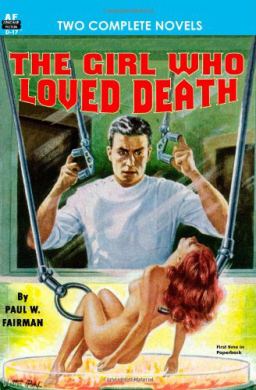A Few Words on Clark Ashton Smith
 Last Friday was Friday the thirteenth. It was also Clark Ashton Smith’s birthday. In memory of that conjunction, I’d like to write a bit about Smith and his work. I have only a few thoughts about Smith’s prose style; Ryan Harvey’s excellent and insightful look at Smith’s fiction can be found in four parts, here, here, here, and here. And you can find an online collection of Smith’s works here.
Last Friday was Friday the thirteenth. It was also Clark Ashton Smith’s birthday. In memory of that conjunction, I’d like to write a bit about Smith and his work. I have only a few thoughts about Smith’s prose style; Ryan Harvey’s excellent and insightful look at Smith’s fiction can be found in four parts, here, here, here, and here. And you can find an online collection of Smith’s works here.
Smith’s probably a familiar figure to many readers of this site, but for those that don’t know him, some background: Born in 1893, Smith suffered from a fear of crowds, and never attended high school. He was an autodidact and dedicated reader; he apparently read, in fact, through the Encyclopedia Britannica and Webster’s Dictionary. He wrote novels as a teenager (I haven’t read them, though in recent years they’ve been put into print), sold a few stories at 17, and then published a collection of verse at 19. Plagued by ill-health, he continued to write poetry, and in 1922 received a fan letter from H.P. Lovecraft. The two men became pen pals, and shared ideas and imagery.
In 1929 Smith began writing weird fiction, odd mélanges of horror, science fiction, and fantasy. He published in Weird Tales, like Lovecraft, and like Robert E. Howard, with whom he struck up a friendship by post in 1933. Howard died in 1936, Lovecraft in 1937, and then late in 1937 first Smith’s mother and then his father passed away. Smith had for the most part stopped writing fiction in 1935; although a few stories came in later years, as well as more verse, Smith shifted his focus to sculpture for much of the rest of his life. He died in 1961.

 Ivy’s Ever After
Ivy’s Ever After
 Problem is, that’s not what Alan came to hear. Which results in tragedy (you are reading a dark horror magazine so why would you expect anything less?) that may, or may not, have been easily foreseen.
Problem is, that’s not what Alan came to hear. Which results in tragedy (you are reading a dark horror magazine so why would you expect anything less?) that may, or may not, have been easily foreseen.


 Is Anybody Out There?
Is Anybody Out There?
 Nowadays, most anyone who’s into science fiction and fantasy will know
Nowadays, most anyone who’s into science fiction and fantasy will know  Oaths, vows, geasa, bindings–you love reading about that kind of thing, or you wouldn’t be here at Black Gate. A vow is powerful magic. A vow written or witnessed is more powerful still.
Oaths, vows, geasa, bindings–you love reading about that kind of thing, or you wouldn’t be here at Black Gate. A vow is powerful magic. A vow written or witnessed is more powerful still.